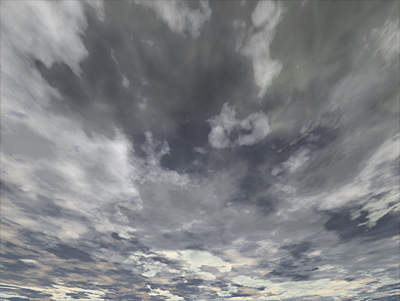

by Jay Reynolds
VERITAS NEWS SERVICE
5/7/99
On April 22, 1999, Environment News Service
carried an article written by William Thomas, which claims to
describe the results of analysis of two samples of material he
believes came from aircraft(1).
Thomas says the samples contained harmful pathogens which were
“aerial fallout” from “tankertype aircraft”
and were collected at unspecified locations, one described only
as “the
U.S. eastern seaboard”, and the other as being near Thomasville
airport in Pennsylvania. The samples were allegedly collected
in January and November, 1998, the first being one year old at
the time Thomas claims the analysis took place.
The evidence Thomas presents is unaccompanied
by any documentation
whatsoever. The sampling locations, lab name, and all actual analysis
results are unspecified, thus all elements of the story are completely
unsourced and unverifiable. The alleged pathogens Thomas claims
were found upon culturing of the samples are part of normal environmental
bacteria and fungi and are not strong pathogens.(2)
They were taken from aluminum house siding which
is certainly not sterile and is exposed to dust, water, insects
and other environmental contaminants. Below I will examine these
and several other claims in Thomas’ story.
Bacteria
The bacteria Thomas asserts were found are
Pseudomonas flourescens and three others, which were unnamed.
Thomas describes them as: “ a fluorescent type of bacteria
found in distant coral reefs, which can be used as a "marker"
in lab tests.” and “Another bacillus contained a "restriction
enzyme" used in research laboratories to "restrict"
or cut DNA material for transfer to other organisms.”, which
he describes as “usually benign” and “a bacteria
capable of
causing a painful ear infection.”
Pseudomonas Flourescens is a common soil bacteria
which is known for it’s ability to use petroleum for food(3),
though Thomas says no fuel was in the sample. While Thomas apparently
knew the identity of the other three bacteria, he purposely chose
to not name them. One clue to the generally benign nature of these
bacteria is that many common “Septic Helper” additives
contain
Pseudomonas flourescens, Pseudomonas aeruginosa, and Bacillus
subtilis.(4)
Fungi
In a bold attempt to make his sample appear extraordinary, Thomas
described one fungus found in this way: “Unlike P. flourescens,
the streptomyces present in our sample is rarely found in outdoor
samples. Used to make several antibiotics, this fungus can cause
severe infections in humans.”
The truth is that Streptomyces is a very common fungi found in soil.(5)(6) It is common enough that it’s isolation from soil is a high school science project.(7) (8) Of the three other fungi Thomas claims were present, only one was named, using the generic name “black yeast”, which are also commonly isolated from soils.(9) (10) (11)
Thomas Rationalizes Withholding Documentation
In an attempt to rationalize the total lack
of sourced and verifiable documentation, the article states: “We
decided to withhold the name of our testing facility after an
environmental lab in Ohio was besieged by calls from a militia
organization claiming that a jet fuel additive identified by Aqua
Tech
Environmental Inc. was part of a conspiracy to cull the population.”
William Thomas retells the false rumor first publicized by Richard
Finke alleging that Ethylene dibromide is a component of jet fuel.(12)
He adds comments by that hoax’s co-host, Larry Wayne
Harris, who now “charges that Aqua Tech altered its test
results to "almost undetectable amounts" of EDB in order
to fend off
crackpots, protect government contracts and discredit his investigation.”
The question left begging an answer is why, in the three years since Harris allegedly received the ‘altered’ analysis, no further tests of this nature have been commissioned and presented by Harris or anyone else, whatsoever.
Conclusions
Thomas begins this article by stating: “As unmarked tankertype aircraft continue spraying skyobscuring chemtrails over regions of the U.S. and Canada, this writer and American journalist Erminia Cassani have obtained laboratory tests of fully documented samples of aerial fallout.”
Neither the article or any website or person has provided to date any photographs of aircraft, tanker or otherwise, spraying anything over regions of the U.S. and Canada. All information Thomas relates about his alleged samples is totally undocumented, unsourced, and therefore unverifiable. Of the organisms he claims to have identified, the majority are purposefully not identified by name. Each and every organism he does claim to have identified is ubiquitous, cosmopolitan, and endemic in the natural environment, and are probably the result of natural wind-blown dust and water.
While making little to no mention of most organisms
he says were identified, Thomas goes to great lengths in exagerrating
the health hazards and sinister connections he believes about
these natural soil organisms. He attempts to link his story to
other stories which are also unsourced, undocumented, and unverifiable.
Near the end of his article, he mentions: “our own friendly
biologist turned edgy and cold after finding few references to
our toxic samples in medical books or Internet databanks.”
Since attempting my own search of the facts about Thomas’
claims, I see clearly why the biologist “turned edgy and
cold”, it was not a dearth of information on these common
organisms, it was
the biologist’s realization that she was expected to make
a “big story” out of what she knew was common dirt.
Jay Reynolds
.References:
(1) http://ens.lycos.com/ens/apr99/1999L-04-22-01.html
(2) Dr. John Ireland at: http://www.dejanews.com/[ST_rn=qs]/get
doc.xp?AN=471616617
(3)http://chemistry.miningco.com/library/weekly/aa081798.htm?rf=dp&
COB=home&TMog=1056257842102018m&Mint=27617453611343
(4) http://www.septiccleaner.com/analy.htm
(5) http://www.accessexcellence.org/LC/SS/ferm_tables.html
(6) http://www.accessexcellence.org/AE/AEPC/Wards/restrict/background.html
(7) http://www.accessexcellence.org/AE/AEC/AEF/1994/barnard_isolation.html
(8) http://molbio.cbs.umn.edu/asirc/protocol/isolation.html
(9)http://www.botany.utoronto.ca/ResearchLabs/MallochLab/Malloch
/Moulds/Exophiala.html
(10)http://www.botany.utoronto.ca/ResearchLabs/MallochLab/Malloch
/Moulds/Aureobasidium.html
(11)http://www.botany.utoronto.ca/ResearchLabs/MallochLab/Malloch
/Moulds/Phialophora.html
(12)http://www.fortunecity.com/greenfield/swallowtail/619/linesinsky.html